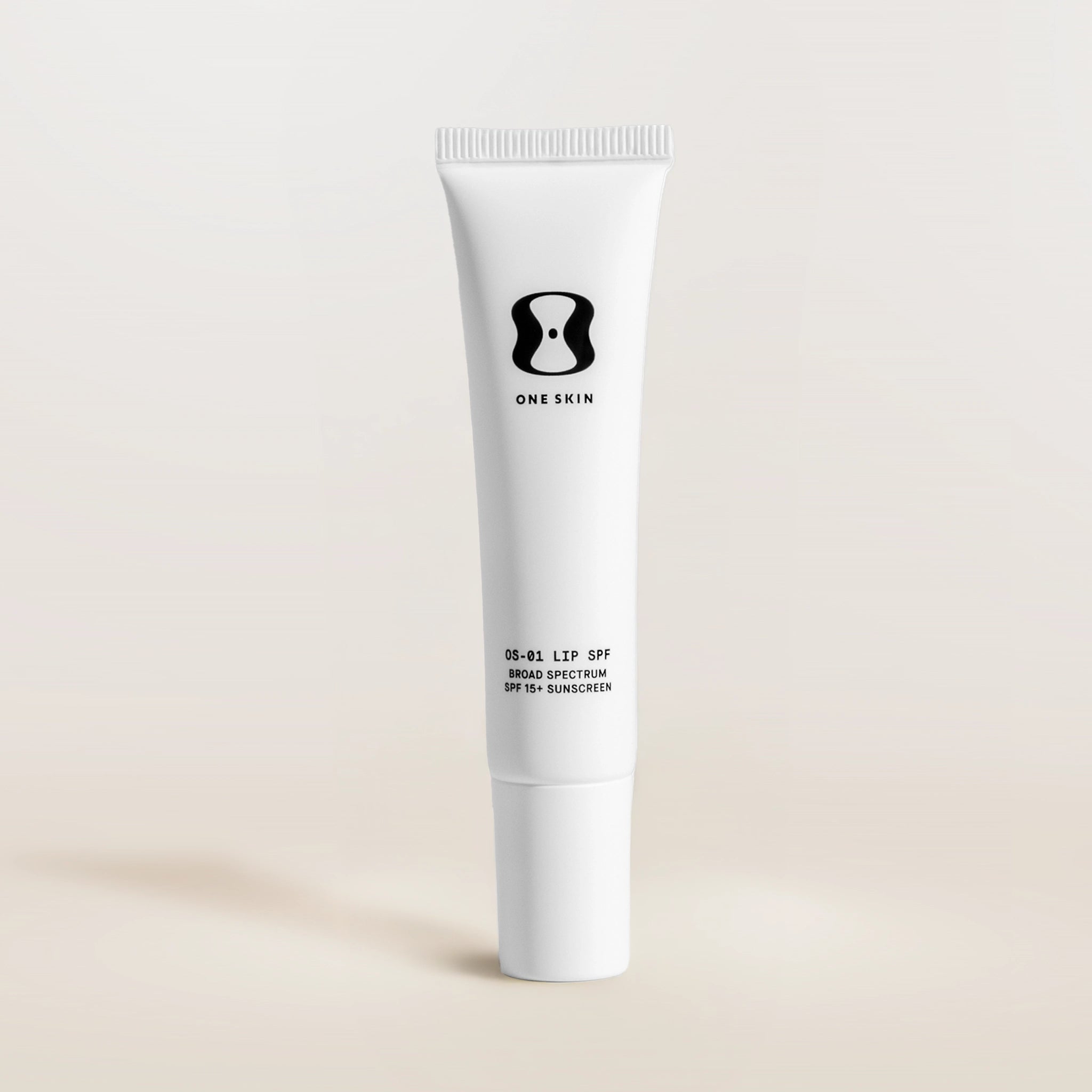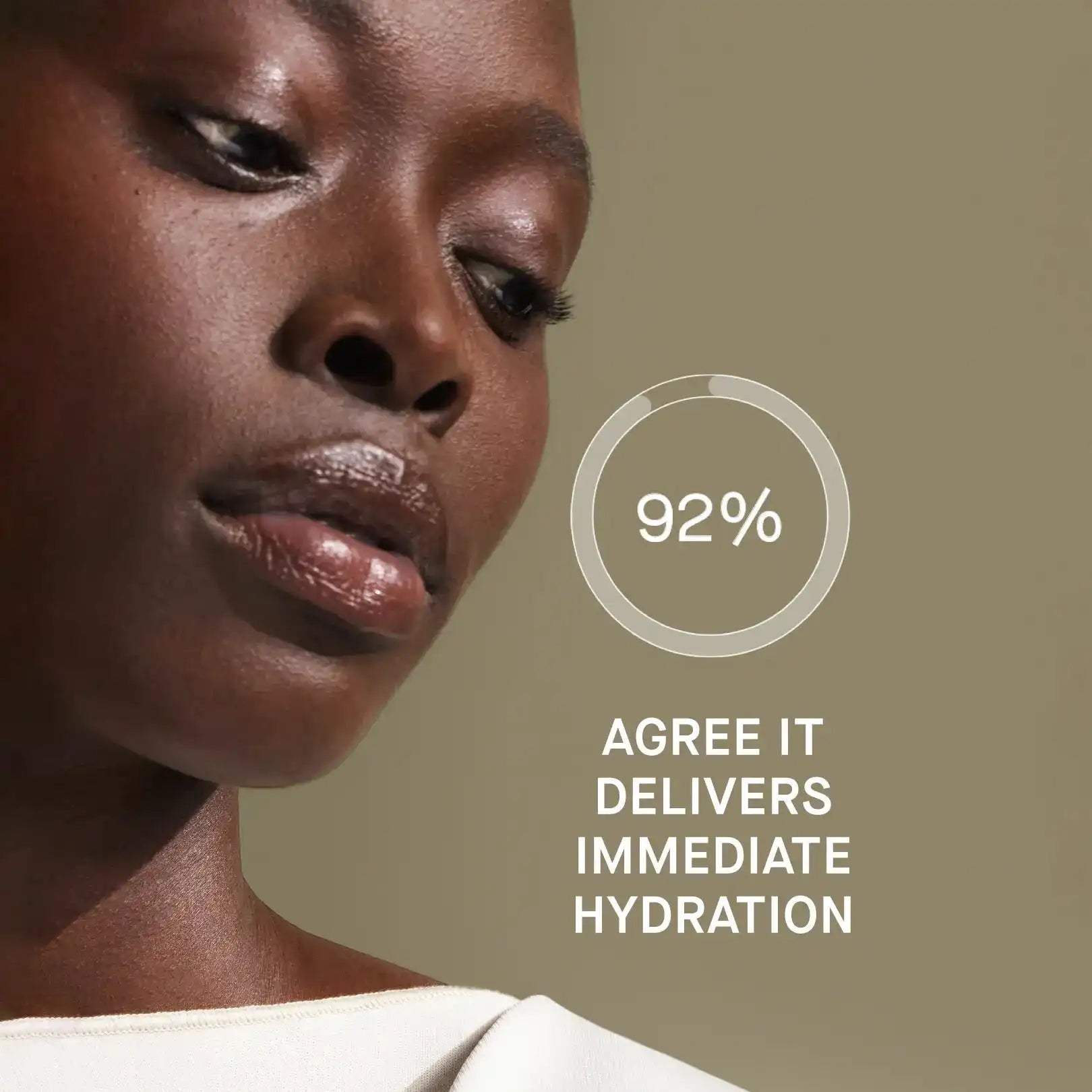Did you know that signs of lip aging, like lip volume and lip wrinkling, are some of the leading factors in perceived facial aging?[1]
Lip aging isn't just a cosmetic concern; your lip's unique biology makes it a gateway for oxidative damage that causes premature aging and cellular dysfunction.
Luckily, lip protection featuring a strong antioxidant profile can help keep your lips plump and healthy.
Why Do Your Lips Age So Fast?
The very traits that make lips so flexible and expressive also make them prone to drying out, becoming chapped, and aging more quickly than normal skin.
The most impactful trait of lip skin is its significantly thinner skin barrier, greatly reducing its protective capabilities. The upper layer of skin, the stratum corneum, on your lips is about 75% thinner than this layer of skin on your face and lacks critical functions related to skin protection and skin barrier function:[2]
- Sebaceous Glands: These glands produce skin-protecting oils called sebum, which comprise an integral part of your skin barrier.[3]
- Keratinized Cells: These cells produce keratin, a structural protein that helps waterproof your skin and lock in moisture.[3]
- Melanocytes: Melanocytes produce melanin, a protein responsible for skin tone and critical for UV protection.[3]
With such a weakened skin barrier, moisture can escape much more easily, explaining the susceptibility of your lips to drying out. What's worse is that this process goes both ways, letting in more external pro-aging factors like UV and IR radiation, blue light, and pollution. Within the lips, these external factors accelerate aging by producing free radicals that degrade collagen, hyaluronic acid, and elastin.[4] Collectively, these vulnerabilities cause lips to exhibit premature signs of aging, including volume loss, fine lines, and persistent dryness.
How Do Antioxidants Prevent Lip Aging?
Free radicals damage your skin by stealing an electron from stable molecules. This, in turn, causes the stable molecule to become a free radical itself, creating a cascade of damage that accelerates aging processes like cellular senescence that contribute to skin inflammation.[5] Antioxidants protect your lips from these sources of premature aging by neutralizing the free radicals before they can cause damage to lip skin’s vital cells and structures.[6]
In addition to their antioxidant capacity, many topically applied antioxidants have additional benefits that can enhance lip barrier integrity, reduce pro-inflammatory signaling, and promote skin repair.
OS-01 LIP SPF: A Smarter Lip Defense
Combining the effects of our favorite UV filter (non-nano zinc oxide), our patented OS-01 Senescence-Blocking Peptide™, and a carefully selected blend of potent antioxidants, OS-01 LIP SPF provides comprehensive lip protection from the primary drivers of lip aging. Thanks to this ingredient profile, OS-01 LIP SPF is scientifically validated to significantly improve the epidermal thickness of the lips and reduce a key UV-induced inflammation biomarker.[7]

Shown in lab studies on ex vivo human skin samples by measuring the gene expression level of IL-8, MMP3, and CDKN1A/P21 in the epidermis before and 24 hours after UV exposure. Skin that was treated with OS-01 LIP SPF displayed a significant decrease (78.2% lower IL-8 levels*, 67.1% lower MMP3 levels**, and 70.91% lower CDKN1A/P21 levels*) compared to skin that was not treated. (*p<0.05; **p<0.01)
Heres how the antioxidants behind these results work at the cellular level to reduce oxidative stress and more:
Vitamin E
Vitamin E, an essential fat-soluble antioxidant, is crucial for maintaining the structural and functional integrity of cell membranes. In the especially thin skin of your lips, vitamin E’s antioxidant capacity helps it neutralize damaging free radicals from sun exposure.[8] OS-01 LIP SPF leverages the effects of two forms of vitamin E—tocopheryl acetate & tocopherol—for their unique properties:
- Tocopheryl acetate is an esterified, stabilized form that prolongs antioxidant activity.[8]
- Tocopherol provides immediate bioavailability for radical scavenging.[8]
Tetrahexyldecyl Ascorbate
Tetrahexyldecyl ascorbate (THDC) is a more stable, oil-soluble form of vitamin C designed to penetrate into the deeper skin layers. Clinical research suggests that THDC effectively boosts collagen production, visibly brightens uneven pigmentation, improves signs of photodamage, and strengthens skin against daily oxidative stress caused by sun exposure and pollution.[9] These effects make it particularly effective for managing the visible signs of lip aging, promoting a smooth, even tone, and restoring vibrancy to lip appearance.
Ectoin
Ectoin is a powerful and multifunctional amino acid-derived antioxidant, often found in extremophile halophilic bacteria, where it helps them survive the extreme osmotic stress of high salinity environments.[10] In your lips, ectoin helps protect against various environmental stressors like dryness, UV damage, and pollution. By deeply binding moisture to lip cells and forming a protective barrier, ectoin prevents dehydration and shields sensitive skin.[11]
This intense hydration makes ectoin an excellent antioxidant for the dryness-prone skin on your lips.
Bisabolol
Derived from chamomile, bisabolol is a naturally occurring antioxidant known for its soothing and anti-inflammatory properties—perfect for keeping lips soft, smooth, and comfortable, especially in harsh conditions.[12] Additionally, bisabolol is a penetration enhancer that improves the transdermal delivery of other actives, helping the actives in OS-01 LIP SPF work within your skin, not just on the surface.[13]
Centella Asiatica Extract
Extracted from Centella asiatica (Cica), a medicinal plant long used in traditional remedies, this extract contains several strong antioxidants and soothing, anti-inflammatory compounds. Cica actively encourages collagen production, fibroblast growth, and skin renewal, promoting lips to look plumper and healthier.[14] Especially in damaged or dehydrated lip skin, Cica protects delicate lip tissue from oxidative damage caused by sun exposure and environmental stress, ensuring your lips remain comfortable, resilient, and hydrated.
Hippophae Rhamnoides (Sea Buckthorn) Oil
Sea buckthorn oil is a nutrient-dense botanical extract rich in antioxidants, omega fatty acids, and vitamin C.[15] This comprehensive antioxidant profile protects against UV-induced oxidative damage and prevents UV-induced disruption of cellular repair mechanisms, underscoring its photoprotective properties.[16] This makes it perfect for dry, irritated lips needing restored elasticity and supported healing.
Conclusion: The Future of Lip Care is Functional
Your lips deserve more than superficial love from your lip care products—they need advanced, scientifically validated, and functional care. With OS-01 LIP SPF, you can leave your lips feeling ultra-hydrated and be confident that they are protected no matter what external stressors come their way.
Key Takeaways
- Your lips are thinner and more delicate than the rest of your skin, which is why they dry out faster and age more quickly.
- By blocking free radical activity, antioxidants serve as a protective shield against the daily environmental stressors that speed up lip aging.
- A little balm isn’t enough—your lips need advanced protection that hydrates, heals, and prevents aging from the inside out.
- Packed with six science-backed antioxidants, OS-01 LIP SPF is your all-in-one defense system for lip health, fighting free radicals, UV damage, and cellular senescence.
References
- https://link.springer.com/referenceworkentry/10.1007/978-3-642-27814-3_91-2
- https://www.ncbi.nlm.nih.gov/books/NBK507900/
- https://pmc.ncbi.nlm.nih.gov/articles/PMC8251770/
- https://pmc.ncbi.nlm.nih.gov/articles/PMC10706187/
- https://pmc.ncbi.nlm.nih.gov/articles/PMC3614697/
- https://pmc.ncbi.nlm.nih.gov/articles/PMC2927345/
- Based on data from clinical studies and/or lab studies conducted on human skin samples, 3D skin models, and skin or hair cells in the OneSkin lab. Explore more at oneskin.co/claims
- http://pmc.ncbi.nlm.nih.gov/articles/PMC4976416/
- https://pmc.ncbi.nlm.nih.gov/articles/PMC8395926/
- https://pubmed.ncbi.nlm.nih.gov/36311375/
- https://pmc.ncbi.nlm.nih.gov/articles/PMC8850511/
- https://pmc.ncbi.nlm.nih.gov/articles/PMC9002489/
- https://www.sciencedirect.com/science/article/abs/pii/037851739190167M
- https://pmc.ncbi.nlm.nih.gov/articles/PMC3834700/
- https://pmc.ncbi.nlm.nih.gov/articles/PMC6162715/
- https://pmc.ncbi.nlm.nih.gov/articles/PMC5438513/





